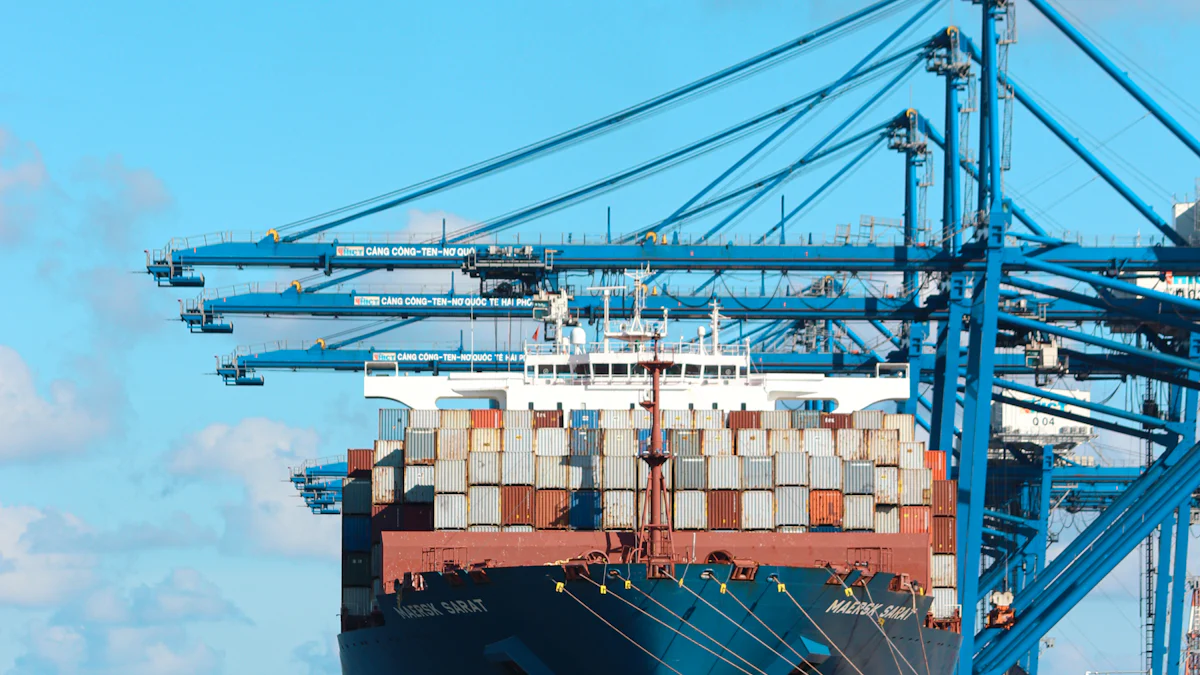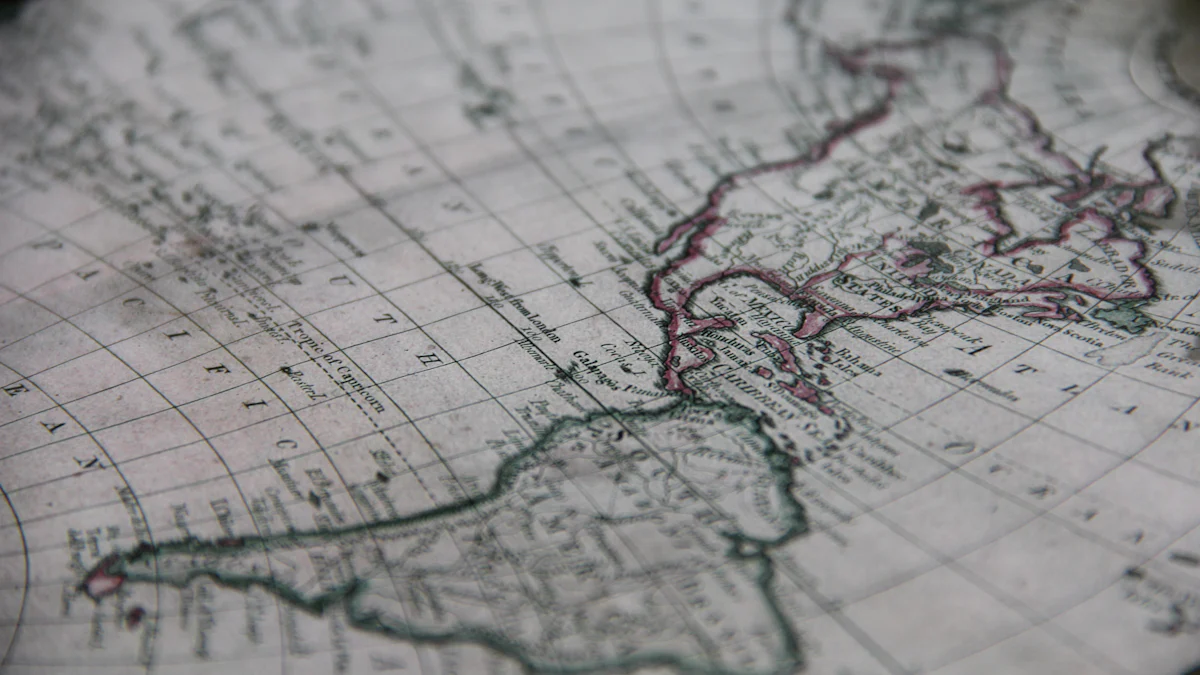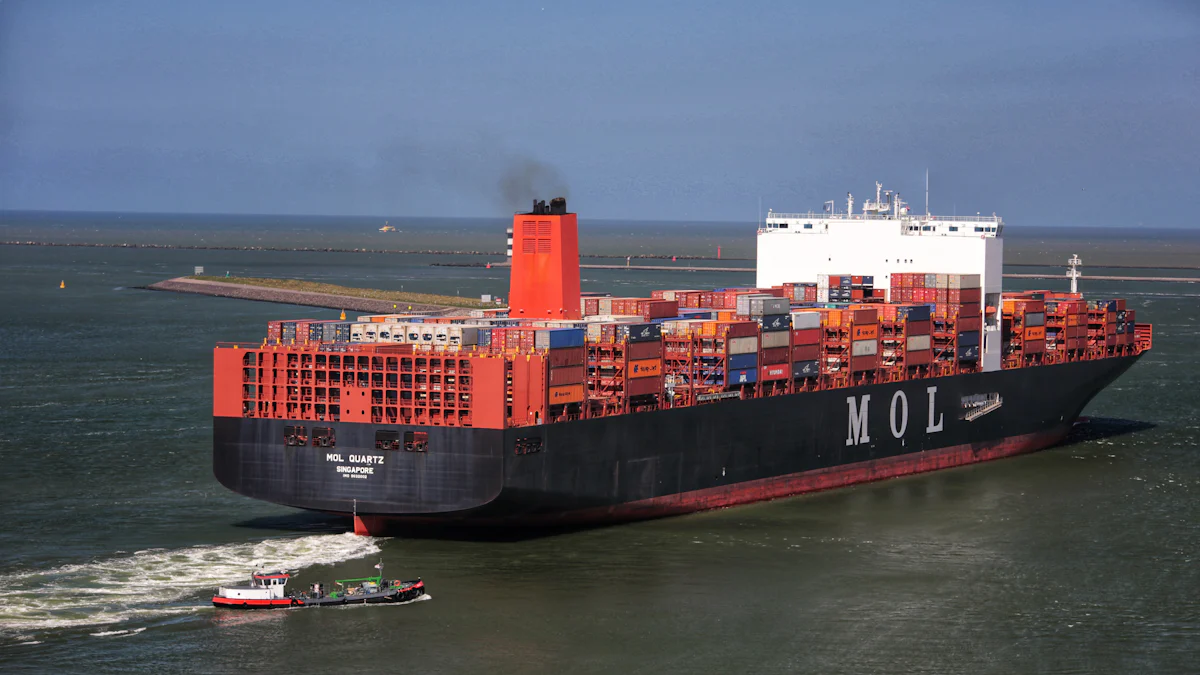Oceanic Trade Routes: Unpacking the Ebb and Flow of Global Freight Markets

Oceanic trade routes play a crucial role in global commerce. These routes enable the movement of goods across continents, driving economic growth and development. Understanding the dynamics of the Ocean Freight Market helps businesses navigate the complexities of international trade. This blog aims to provide a detailed analysis of these vital topics, offering insights into market trends, challenges, and future projections.
Historical Context of Oceanic Trade Routes

Early Trade Routes
Ancient Maritime Routes
Ancient maritime routes laid the foundation for global trade. The Phoenicians, known for their seafaring skills, established trade networks across the Mediterranean. These routes facilitated the exchange of goods like timber, glass, and purple dye. The Greeks and Romans expanded these networks, connecting Europe with Africa and Asia. Long-distance trade in antiquity led to cultural, religious, and artistic exchanges between Europe and Asia.
Medieval Trade Networks
Medieval trade networks saw significant growth and diversification. The Silk Road, a famous trade route, connected China with the Middle East and Europe. Chinese merchants traded silk, spices, and other valuable goods. The flexibility of the Silk Road allowed for the inclusion of new inventions and ideas. During the 9th century CE, Italian city-states like Venice and Genoa took over Mediterranean trade networks. These city-states became powerful trading hubs, influencing commerce and culture across Europe.
Evolution Over Centuries
Age of Exploration
The Age of Exploration marked a turning point in oceanic trade routes. European explorers like Christopher Columbus and Vasco da Gama sought new trade routes to Asia. These voyages led to the discovery of the Americas and new sea routes around Africa. The Portuguese and Spanish empires established vast trade networks, connecting Europe with Asia, Africa, and the Americas. These routes enabled the exchange of goods, ideas, and cultures on an unprecedented scale.
Industrial Revolution and Its Impact
The Industrial Revolution brought significant changes to oceanic trade routes. Steamships replaced sailing vessels, making sea travel faster and more reliable. The construction of the Suez Canal in 1869 and the Panama Canal in 1914 revolutionized global trade. These canals shortened travel distances and reduced shipping costs. International trade flourished as goods could be transported more efficiently. The Industrial Revolution also led to the rise of major port cities, further enhancing global trade networks.
Current Trends in the Ocean Freight Market

Major Trade Routes Today
Key Shipping Lanes
Key shipping lanes form the backbone of the Ocean Freight Market. The Strait of Malacca stands out as a vital connector between the Pacific and Indian Oceans. About 94,000 ships pass through this strait annually. This route carries around 30% of all traded goods globally. Another crucial lane, the Suez Canal, links the Mediterranean with the Red Sea. This canal serves as the shortest maritime route between Europe and Asia. Approximately 40% of world trade passes through the Suez Canal each year.
The Danish Straits also play a significant role. These straits connect the North Sea with the Baltic Sea. The Danish Straits serve as a major shipping lane for Russian oil exports. The Hormuz Strait is another key player. This strait is the main route for oil from the Middle East. Around 20% of global liquefied natural gas passes through the Hormuz Strait annually.
Strategic Chokepoints
Strategic chokepoints are narrow passages that hold immense importance in the Ocean Freight Market. The Strait of Malacca is one such chokepoint. This strait is the fastest connector between the Pacific and Indian Oceans. Any disruption here can impact global trade significantly. The Suez Canal is another critical chokepoint. This canal shortens the maritime route between Europe and Asia. Blockages in the Suez Canal can lead to substantial delays and increased shipping costs.
The Hormuz Strait also acts as a strategic chokepoint. This strait is crucial for transporting oil from the Middle East. Any instability in this region can affect global oil prices. The Danish Straits, while less known, are equally important. These straits facilitate the movement of goods between the North Sea and the Baltic Sea. Disruptions here can impact European trade routes.
Economic Factors in the Ocean Freight Market
Global Trade Agreements
Global trade agreements shape the dynamics of the Ocean Freight Market. These agreements reduce tariffs and promote free trade. The North American Free Trade Agreement (NAFTA) and the European Union (EU) are prime examples. NAFTA has facilitated trade between the United States, Canada, and Mexico. The EU has created a single market for its member countries. These agreements have led to increased shipping activities and economic growth.
Impact of Tariffs and Trade Wars
Tariffs and trade wars significantly impact the Ocean Freight Market. Increased tariffs can lead to higher shipping costs. Trade wars can disrupt established trade routes. The recent trade war between the United States and China serves as an example. This conflict led to increased tariffs on various goods. As a result, shipping companies had to navigate new trade routes. These changes affected shipping schedules and costs.
Technological Advancements
Automation in Shipping
Automation is transforming the Ocean Freight Market. Automated systems improve efficiency and reduce human error. Ports now use automated cranes and vehicles to handle cargo. These advancements speed up loading and unloading processes. Automated ships are also becoming a reality. These vessels can navigate and operate without human intervention. Automation reduces operational costs and increases safety.
Digitalization and Smart Ports
Digitalization is another game-changer in the Ocean Freight Market. Real-time tracking systems provide accurate information about shipments. These systems help companies manage their supply chains more effectively. Smart ports are emerging as hubs of digital innovation. These ports use advanced technologies to optimize operations. Sensors and data analytics improve cargo handling and storage. Digitalization enhances transparency and efficiency in the shipping industry.
Influencing Factors and Challenges
Environmental Concerns
Climate Change Impact
Climate change has lasting effects on the Ocean Freight Market. Rising sea levels disrupt port operations, causing delays in loading and unloading cargo. Extreme weather events, like hurricanes and typhoons, damage ships and infrastructure. These disruptions increase shipping costs and affect delivery schedules. New climate regulations also impact the industry. Ships must comply with stricter emission standards, which can be costly. Researchers have found that reducing sulfur in ship fuel since 2020 likely accelerated global warming.
Sustainable Shipping Practices
Sustainable shipping practices aim to reduce the environmental footprint of the Ocean Freight Market. One effective method is slow steaming, where ships travel at reduced speeds to lower fuel consumption and emissions. The first study on regulated slow steaming showed it is technically possible and can lead to significant reductions in global ship CO2 emissions. Ports are also adopting green technologies. Electric cranes and vehicles reduce reliance on fossil fuels. Enhanced weather routing helps ships avoid rough seas, saving fuel and reducing emissions.
Political and Regulatory Issues
Maritime Security
Maritime security remains a critical concern for the Ocean Freight Market. Piracy poses a significant threat, especially in regions like the Gulf of Aden and the Strait of Malacca. Pirates hijack ships, steal cargo, and demand ransom, disrupting trade routes. Governments and international organizations work together to patrol these waters and protect vessels. Naval escorts and armed guards on ships enhance security. However, these measures increase operational costs for shipping companies.
International Regulations
International regulations shape the Ocean Freight Market. The International Maritime Organization (IMO) sets global standards for safety, security, and environmental performance. Compliance with these regulations ensures safer and cleaner shipping practices. The IMO's 2020 sulfur cap requires ships to use low-sulfur fuel, reducing air pollution. This regulation has led to increased fuel costs and the need for new technologies. Ships now use scrubbers to clean exhaust gases or switch to alternative fuels like liquefied natural gas (LNG).
Economic Volatility
Market Fluctuations
Market fluctuations significantly impact the Ocean Freight Market. Changes in supply and demand affect shipping rates and capacity. An economic downturn reduces trade volumes, leading to lower freight rates. Conversely, an economic boom increases demand for shipping services, driving up rates. Shipping companies must adapt to these fluctuations to remain profitable. Advanced software and algorithms help analyze rate trends, making predictions to manage fluctuating rates.
Future Projections and Innovations
Emerging Trade Routes
Arctic Shipping Lanes
Arctic shipping lanes offer new possibilities for global trade. Melting ice in the Arctic opens shorter routes between Europe and Asia. The Northern Sea Route reduces travel time by up to 40%. This route saves fuel and cuts emissions. However, harsh weather and ice conditions pose challenges. Ships need special designs to navigate these waters. Environmental concerns also arise due to increased traffic. The Arctic Council monitors these impacts closely.
Belt and Road Initiative
The Belt and Road Initiative (BRI) reshapes global trade routes. China invests in infrastructure projects across Asia, Africa, and Europe. New ports, railways, and roads enhance connectivity. Italian ports benefit from BRI investments. These ports improve facilities and increase trade volumes. Local and cross-border security dynamics also change. Countries along the BRI route see economic growth. However, debt and political issues create challenges. Cooperation remains key for success.
Technological Innovations
Autonomous Ships
Autonomous ships revolutionize the shipping industry. These vessels operate without human crews. Advanced sensors and AI systems guide navigation. Autonomous ships reduce labor costs and human error. Trials show promising results in efficiency and safety. However, regulatory frameworks need updates. Governments work on new rules for autonomous operations. The industry anticipates widespread adoption soon.
Green Technologies
Green technologies transform maritime practices. Ships use alternative fuels like liquefied natural gas (LNG). LNG reduces emissions compared to traditional fuels. Electric and hybrid vessels gain popularity. Ports adopt renewable energy sources. Solar panels and wind turbines power port operations. Green technologies help meet stricter environmental regulations. Sustainable practices become standard in the industry.
Expert Opinions and Case Studies
Industry Expert Insights
Industry experts provide valuable insights into future trends. Experts predict increased use of digital technologies. Real-time tracking and predictive analytics optimize supply chains. Automation continues to grow in port operations. Experts also highlight the importance of sustainability. Green technologies and practices gain traction. Collaboration between stakeholders drives innovation.
Real-world Case Studies
Real-world case studies illustrate successful innovations. The Port of Rotterdam leads in digitalization. Smart port technologies streamline operations. Automated cranes and vehicles enhance efficiency. The port also focuses on sustainability. Renewable energy powers many facilities. Another example is the Maritime Belt and Road in Italy. Italian ports upgrade infrastructure with BRI support. These ports handle more cargo and boost local economies.
These examples show the potential of future innovations. The shipping industry evolves with new technologies and practices. Stakeholders must stay informed and adapt to changes.
Oceanic trade routes remain vital for global freight markets. These routes drive economic growth by enabling the movement of goods across continents. Key points discussed include historical evolution, current trends, and future projections. The industry faces challenges like climate change, geopolitical tensions, and new regulations. Future developments promise innovations in technology and sustainability. Staying informed about these changes helps businesses navigate the complexities of international trade.
See Also
Exploring the Influence of International Trade Policies on Economies
Understanding the Effects: Logistics Risk Patterns
Insights into Ocean Freight Logistics: Latest in 2024
Cracking the Code: Importance of Supply Chain Transparency in Global Online Business
